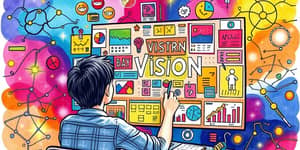
Life rarely follows a straight line. Career and personal shifts can arrive unexpectedly, challenging the plans we once held dear. Yet these moments also offer profound opportunity for reinvention and growth.
By embracing adaptability and strategic foresight, you can transform uncertainty into momentum and achieve lasting success and fulfillment.
In today’s workforce, career mobility is at historic highs. Over half of U.S. professionals actively consider new roles, and job hopping has become a recognized path to advancement.
On average, American workers change positions twelve times during their careers, with Gen Z and Millennials most eager for change. These generations plan shifts at rates near two thirds, while Boomers remain more settled.
This fluid environment demands a fresh perspective: stability no longer means staying put. Instead, resilience comes from anticipating change and aligning your journey with evolving personal and professional goals.
Understanding why people shift paths is crucial for crafting a plan that truly resonates with your own motivations.
Financial pressure remains a top factor, with over a third seeking improved compensation. Yet for the first time, work-life balance edges past salary as the primary concern, reflecting deeper priorities around well-being and purpose.
Other powerful motivators include job security, desire for growth, and a healthier culture. Many leave toxic environments in search of supportive leadership and collaborative teams. Technological shifts, particularly around AI, add urgency: by 2030, most skills will transform significantly.
Adaptability is not a passive trait; it’s an active practice. By taking intentional steps, you can navigate changes with confidence and clarity.
Frequent changes may raise eyebrows for some recruiters. Nearly half view rapid transitions as potential red flags. Combat this by framing each move around growth, highlighting achievements and acquired skills.
Burnout and dissatisfaction also loom as risks. High-stress sectors, including IT, show rising unhappiness. Prioritize self-care, set boundaries, and communicate needs clearly to avoid exhaustion.
Technology, especially AI, is reshaping roles faster than ever. Around fifty percent of employers plan to reorient their businesses, with two thirds seeking AI expertise while some automate tasks completely.
Staying ahead means committing to lifelong learning. Online courses, microcredentials, and mentoring can help you adapt as job requirements evolve. Cultivating personal agility—the ability to pivot quickly—will be your greatest competitive advantage.
The idea of a single, unchanging career path is fading. In its place stands an era defined by continuous growth, adaptability, and intentional reinvention.
By acknowledging the forces driving change, adopting strategic habits, and nurturing a mindset of resilience, you can navigate any twist or turn with confidence. Embrace adaptation as a source of empowerment, and make every change a stepping stone toward a richer, more purposeful life.
References













